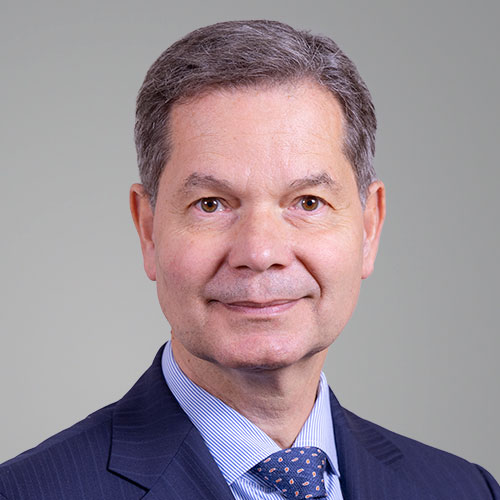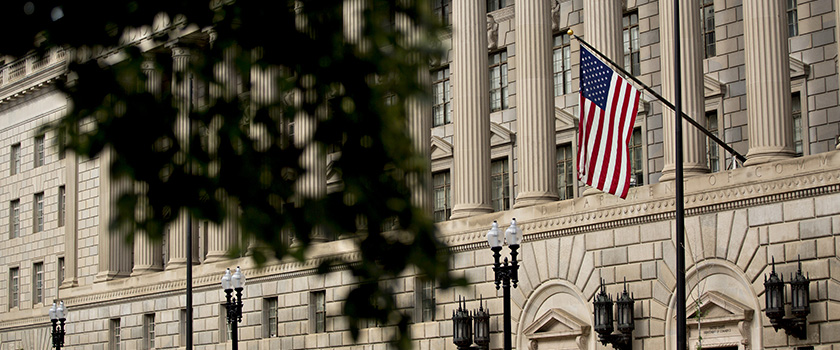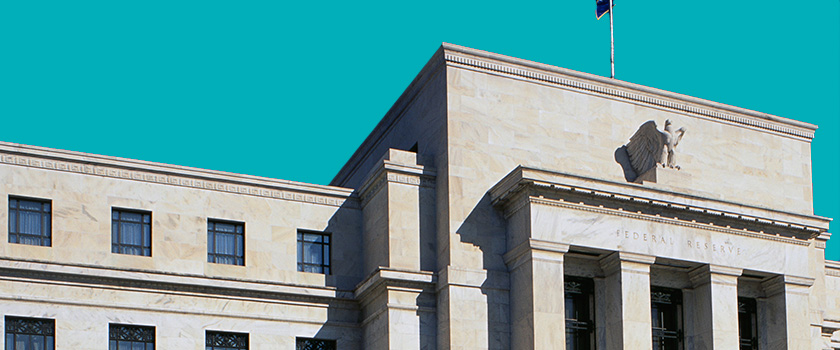Norman Villamin, Chief Investment Officer (CIO) Wealth Management, and Patrice Gautry, UBP Chief Economist, hosted a special webinar to discuss the investment implications of the conflict between Russia and Ukraine.
After months of heightened political tensions between Russia and Ukraine, the situation finally came to a head on 22 February. Bearing in mind that the crisis we are witnessing is first and foremost a humanitarian one, Norman Villamin emphasised the major impact it is having on global policy dynamics in the US, EU and Asia. Seismic shifts have already occurred, such as Germany’s historic decision to increase defence spending, as well as discussions in Finland about NATO membership. Such developments will have a lasting effect on the investment landscape.
In the shorter term, the prospect of rising energy prices and potentially higher agricultural commodity prices could bring with them additional stagflation risks for economies around the world.
Patrice Gautry reminded us that, according to the global base scenario, 2022 was supposed to be a year of moderate growth, high inflation and tighter monetary regimes. Global growth was expected to be weak in Q1 22, but high savings and strong labour trends are still supporting consumer spending. In Q2, global activity was expected to rebound thanks to removal of restrictions related to COVID-19, with sectors and countries generally opening back up.
Due to pressure from commodity prices, inflation was already the major concern, although it was expected to progressively decline in H2 22 thanks to base effects. As announced by central banks, monetary policies should have entered a tighter regime, except in China. All in all, global growth was forecast to continue at a moderate pace of 4% in 2022, down from 5.6% in 2021.
Risks spreading through commodities
As the crisis unfolds further, the basic scenario is being challenged and we have already seen major changes in the communications coming out of central banks. With Russia and Ukraine being major commodity, metal and grain exporters, the spread of risks to the global economy will be through trade associated with these exports and global inflation. Russia accounts for 30–40% of the EU’s gas imports and 10% of global crude oil imports. Russia and Ukraine together control more than one-third of the world’s wheat exports and nearly 15% of global corn exports.
“Even if the conflict does not last long, it will still have long-term consequences and generate high levels of uncertainty”, stated Gautry.
It restores a Cold War environment that will lead to an increase in military spending; it also raises the question of energy independence. Even if some negotiations were to be concluded quickly, pressure on defence, energy, commodity and grain prices will be felt for a long time. Large imbalances between supply and demand will probably persist after the initial shock of the conflict.
Europe more exposed to downside risks
The region most geopolitically exposed to the conflict is, of course, Europe; however, it is also the most exposed to economic risks. Whereas the European Central Bank (ECB) was expected to raise interest rates significantly over the next two years, it will have to review its agenda to accommodate the geopolitical and macroeconomic fallout.
In terms of inflation, increasing pressures from energy, grain and metal prices could add between 0.3% and 1.5% to inflation in the eurozone. The inflation rate should remain above 5% y/y over the coming quarters, with the effects lasting until 2023.
There are further downside risks in terms of growth that could dampen the rebound expected in Q2. Constraints on trade will impact both Russia and Europe. Europe is more dependant in terms of imports than exports, and even if the macroeconomic impact of the sanctions were to stay subdued, specific firms doing business in Russia will be severely affected by sanctions.
“Limited-impact” and “long-tail” scenarios
In a “short-term and limited-impact” scenario, the crisis would trim 0.3–0.5% off eurozone growth; however, this would not be sufficient to derail the economic cycle and full-year growth would come in at 3.5%.
If the risks remain persistently high and upside pressures on energy prices do not abate, we would enter a “tail-risk” scenario, in which Germany and Italy would probably be the most badly affected. Overall, this scenario could knock up to 1.7% off eurozone aggregate growth, meaning that full-year growth would slow to 2.0%.
In this context, governments would react with higher budgetary spending and would deliver support to consumers. European financing mechanisms (e.g. SURE and the ESM) could be used and new programmes would be launched to finance additional spending.
Preserving growth
As far as monetary policy is concerned, no major changes to the medium-term strategy are expected, except for additional flexibility. The priority will be to provide necessary liquidity through asset purchase programmes to avoid any disruption or fragmentation across markets. The ECB will also be concerned about preserving growth, meaning that decisions on rates could be delayed. “For the moment, we favour the first scenario, but it all depends on geopolitical developments and on how long the crisis lasts,” said Gautry.
“The landscape is continuing to shift very dynamically. This situation is creating new challenges and implications for investors,” confirmed Norman Villamin.
According to him, although the effects of geopolitical shocks on the markets tend to fade over six to twelve months, it is the type of shock that matters. For him, the conflict in Ukraine is best characterised as one between “mismatched” adversaries. However, the situation could yet morph into a prolonged armed conflict that would have spillover effects for the global economy.
Risk of long-term conflict
“The conflict clearly has the potential to be prolonged,” warned UBP’s Chief Investment Officer (CIO) Wealth Management.
In previous instances, such as Iran, SWIFT sanctions proved very effective. Today, this means that the threat of a supply shock is compelling. As a result, achieving headline inflation objectives will be very challenging for central banks. Inflation in the US hit 7.5% in January; for this to return to pre-pandemic levels (2.5% in January 2020) it would require, among other things, crude oil prices to remain below USD 85/barrel for the remainder of the year and agricultural prices to fall by 20% from their current levels by the end of the year – circumstances that already seem almost impossible to achieve.
Although the economy is already suffering on the inflation front, the growth story looks stable for the time being. The Fed will have to be flexible to balance growth and inflation, and be vigilant about the risks that lie ahead.
Implications for fixed-income investors
Market-wise, positive inflation-adjusted yield opportunities remain limited if there are no sharp falls in inflation. Fixed-income investors need alternatives to generate positive inflation-adjusted yields. Inflation-protected securities act as insurance against any Fed/ECB failures to contain inflation. If inflation were to stay high, rather than turning to traditional strategies, investors should look at alternative credit HF strategies to shield them from rising rates and widening spreads.
Implications for equity investors
Historically, rising inflation cycles in which the Fed has increased interest rates have coincided with long-term P/E ratio compression. However, faster earnings growth has generally been able to offset falling P/E ratios to generate modest, positive returns. In this context, it is paramount for investors to remain selective and focus on high-quality earnings with good visibility. Asymmetric exposures via hedge funds and options strategies should also help mitigate risk.










